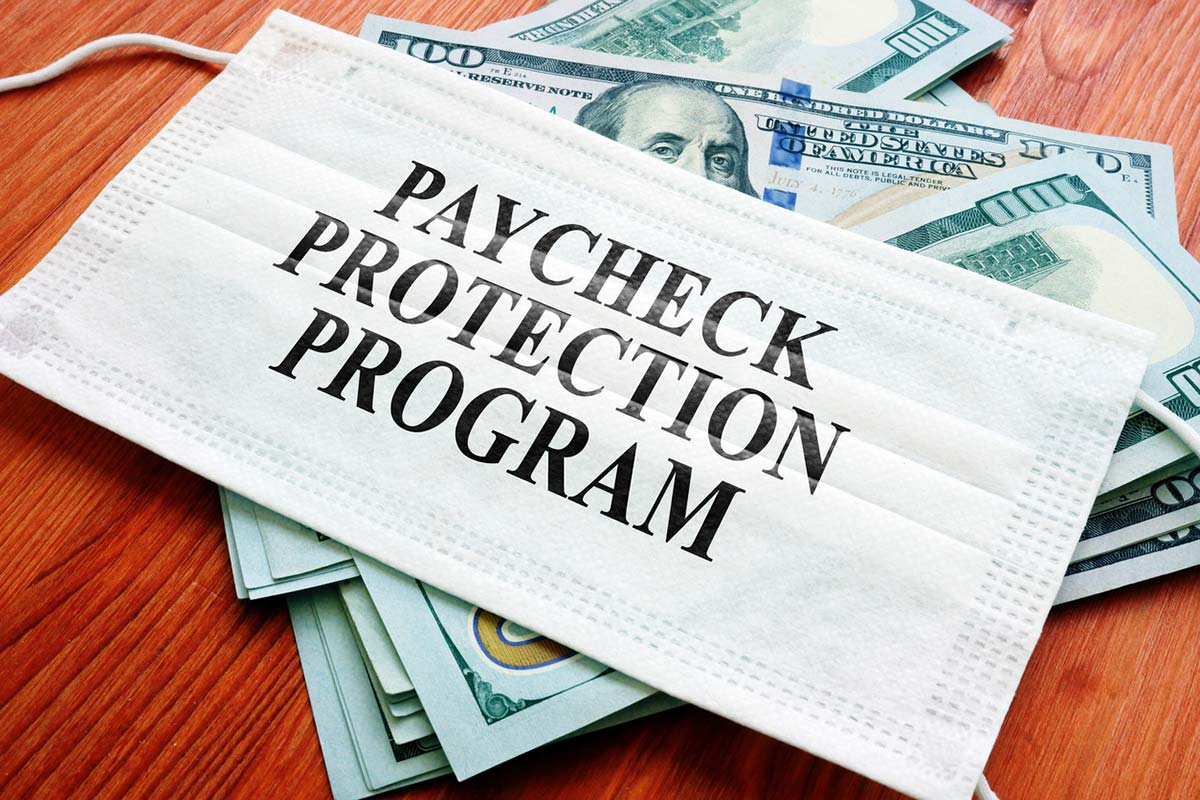Over the recent weeks, individuals of self employment and independent contractors have been very concerned about how they calculate their own compensation for purposes of establishing how much they can borrow for the Paycheck Protection Program (PPP). Yesterday the Small Business Administration communicated to banks exactly how these loans should be calculated.
First step is for the individual of self employment or the independent contractor to find their 2019 IRS Form, 1040 Schedule C line 31 net profit amount. If the individual has not yet filed a 2019 tax return, then they need to fill it out and compute the value of schedule C line 31 of the 1040. If this amount is over $100,000, then it needs to be reduced to $100,000 because that’s the cap amount that can be considered for the loan. If the amount is zero or less then the individual is not eligible for a PPP loan .
The second step is to calculate the average monthly net profit amount. This equates to the average monthly payroll. Simply divide that amount that you would normally. Then multiply that average monthly net profit amount by two and a half. And that gives you your PPP loan amount.
This is for individuals of self employment and independent contractors who don’t have any other employees. If you’re in that boat, and you have, employees, then you would add their payroll, which would include their cash compensation, plus the payroll taxes, plus, health insurance benefits and add that to the individual’s net profit amount divided by. 12, and then that would give you the base amount that then multiply by two and a half times. And once you do, then that’s the loan amount that you the individual can can get.
Then you make application through your bank. As always, I recommend using your personal, a business banker, someone you with whom you have a relationship to pursue these loans. Banks, because they receive so many applications, tend to give preference to their individual existing customers. Plus, you’re going to get better information if you have a direct line to a banker than if you’re just applying to wait even if it’s a small institution.
The next consideration is how an individual with self employment can use this money. Basically, you can use it by paying yourself a salary, based on your net profit. As you calculated to get to the loan amount, you still have to spend 75% of the proceeds of the loan on payroll. If you’re self employed, an independent contractor and you don’t have any employees, then you can pay that to yourself as compensation. That’s considered payroll. You cannot use these proceeds directly to Pay business expenses, outside of rent, utilities and payroll costs.
So, can’t pay those if you weren’t paying them the year before. So the SBA is going to look at your 2019 taxes to determine whether or not rent payments or mortgage payments are actually business expenses, as opposed to personal expenses. The whole idea is for business continuity. So, if you are entitled in 2019 to deduct utility payments as business expenses, then you can pay those with the proceeds of this loan, provided that non payroll expenditures are less than 25% of the overall.
Same with with rent and mortgage deductions. For example, if you don’t have a fixed place of business and you did not deduct any of your housing expenses last year as business expenses, then you you can’t use this money towards that. However, if you did, then you would be able to use this money to pay mortgage expenses or rent on buildings that you use for business purposes.
You can also use this money to to pay down any other SBA loans from the banks made between January 31 of 2020 and April 3 of 2020. You can use this money to convert that to a 1% loan as opposed to a 4% loan, of course, you have to repay this loan over two year period instead of a longer period under the EDL.
So there’s lots of considerations on exactly how you want use these loans. I think the way the, the administrator and the Secretary of the Treasurer are going to treat forgiveness is they’re going to look to the overall purpose of the program, which is to maintain existing operations and payroll. Now the forgiveness side of this hasn’t been fully developed yet. So you’re going to need to be very careful on how you spend this money from the banks for anything other than payroll.
So what I would do is pay the amount that you calculate to yourself, put it in a personal account. Then if you can avoid spending any of that money on business expenses, until after the forgiveness period. I think that would be the best case scenario. Now the worst case scenario is that if it’s disallowed, then you got to pay the money back to the banks, 1% interest, which is not necessarily a terrible thing, depends on your situation.
I made a video about this situation below as well, if you want a more visual instruction on what to do. Thank you!


